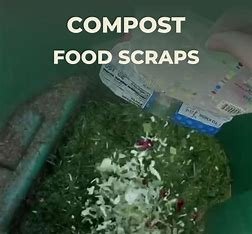Composting food scraps at home is a great way to recycle organic waste, reduce landfill contributions, and create nutrient-rich soil for your garden.

1. Choose a Composting Method:
- Outdoor Compost Bin: Ideal for those with a backyard. You can use a traditional compost bin, tumbler, or create a compost heap.
- Indoor Compost Bin: Perfect for apartment dwellers. You can use a small compost bin with a lid or a worm composting bin (vermicomposting).
2. Select a Location:
- Outdoor: Place your compost bin in a well-drained, shaded area. Ensure it’s easily accessible but not too close to your home to avoid odors.
- Indoor: Choose a ventilated spot in your kitchen or balcony. For vermicomposting, a cool, dark place is ideal.
3. Gather Compostable Materials:
- Greens (Nitrogen-Rich): Fruit and vegetable scraps, coffee grounds, tea bags, fresh grass clippings, and plant trimmings.
- Browns (Carbon-Rich): Dried leaves, shredded newspaper, cardboard, straw, and wood chips.
4. Avoid Composting:
- Meat, Dairy, and Oils: These can attract pests and produce unpleasant odors.
- Pet Waste: Contains harmful pathogens.
- Diseased Plants and Weeds: Can spread disease and invasive seeds.
5. Create the Right Balance:
- Layering: Alternate layers of greens and browns to maintain a balanced carbon-to-nitrogen ratio.
- Moisture: Keep the compost moist but not waterlogged. It should feel like a damp sponge.
- Aeration: Turn the compost regularly (once a week) to provide oxygen and speed up decomposition.
6. Maintain Your Compost:
- Monitor Temperature: A healthy compost pile will generate heat. If it’s too cool, add more greens. If it’s too hot, add more browns and turn it more frequently.
- Check Moisture Levels: If it’s too dry, add water or more greens. If it’s too wet, add browns and turn the compost.
7. Harvesting the Compost:
- Ready Compost: Compost is ready when it’s dark, crumbly, and has an earthy smell. This can take anywhere from a few months to a year, depending on conditions.
- Use: Spread the compost in your garden beds, mix it into potting soil, or use it as mulch to enrich the soil and support plant growth.
Benefits of Composting:
- Reduces Waste: Composting diverts organic waste from landfills, reducing methane emissions.
- Improves Soil Health: Adds essential nutrients and improves soil structure, enhancing plant growth.
- Supports Ecosystems: Encourages beneficial microorganisms and reduces the need for chemical fertilizers.
